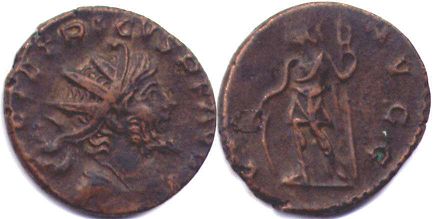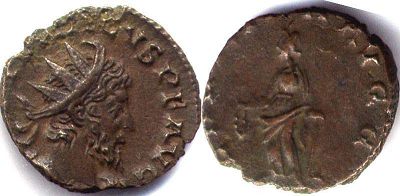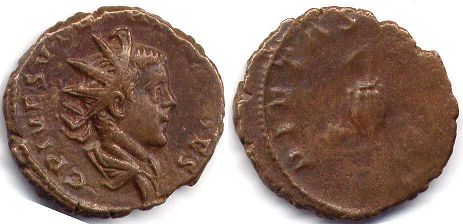Coins of Tetricus I and II - catalog with values
Roman Emperor Tetricus I (271-274)

IMP C TETRICVS P F AVG
VIRTVS AVG G
Antoninianus 272-273
copper
18 mm.
Bust right, in radiate crown and draped armor / Emperor Caesar Tetricus Pious Happy Augustus
Virtus, holding spear and shield / Virtus of Augustus
Coin value ~ US$10-20

IMP TETRICVS P F AVG
LAETITIA AVG G
Antoninianus 271-274
copper
17 mm.
Bust right, in radiate crown and armor / Emperor Tetricus Pious Happy Augustus
Laetitia holding wreath and anchor / Laetitia of August
Coin value ~ US$10-20
Tetricus II

C P E TETRICVS CAES
PIETAS AVGVSTOR
Antoninianus 273-274
copper
18 mm.
Draped bust right, in radiate crown / Gaius Pius Esuvius Tetricus Caesar
Accessories for the sacrifice / Pietas of August
Coin value ~ US$10-20
Costs of Tetricus I and II coins in this catalog approximate and indicated specifically for the coin shown in the picture.
I do not buy or sell coins - this is just a catalog.
See other coins of Imperial Rome.

